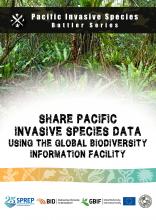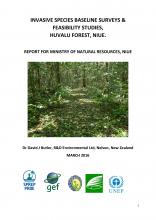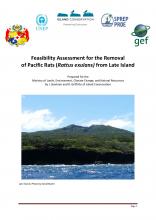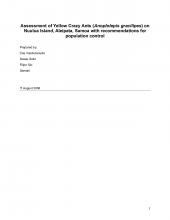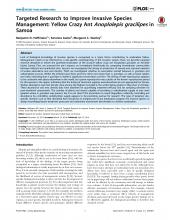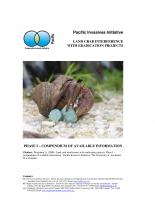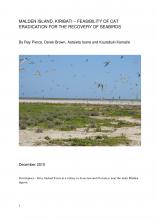Targeted Research to improve invasive species management: yellow crazy ant in Samoa

BRB
Available Online
Auina. S
,
Hoffmann. B
,
Stanley. M.C.
2014
Lack of biological knowledge of invasive species is recognised as a major factor contributing to eradication failure. Management needs to be informed by a site-specific understanding of the invasion system. Here, we describe targeted research designed to inform the potential eradication of the invasive yellow crazy ant Anoplolepis gracilipes on Nu'utele island, Samoa. First, we assessed the ant's impacts on invertebrate biodiversity by comparing invertebrate communities between infested and uninfested sites. Second, we investigated whether an association existed between A. gracilipes and carbohydrate sources. Within the infested area there were few other ants large than A. gracilipes, as well as fewer spiders and crabs, indicating that A. gracilipes is indeed a significant conservation concern. The timing of male reproduction appears to be consistent with places elsewhere in the world, but queen reproduction was outside of the known reproductive period for this species in the region, indicating that the timing of treatment regimes used elsewhere are not appropriate for Samoa. Worker abundance and nest density were among the highest recorded in the world, being greater in May than in October. These abundance and nest density data from baselines for quantifying treatment efficacy and set sampling densities for post-treatment assessments. The number of plants and insects capable of providing a carbohydrate supply to ants were greatest where A. gracilipes was present, but it is not clear if this association is causal. Regardless, indirectly controlling ant abundance by controlling carbohydrate supply appears to be promising avenue for research. The type of targeted, site-specific research such as that described here should be an integral part of any eradication program for invasive species to design knowledge-based treatment protocols and determine assessment benchmarks to achieve eradication.
